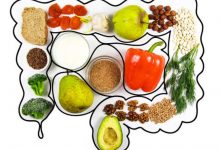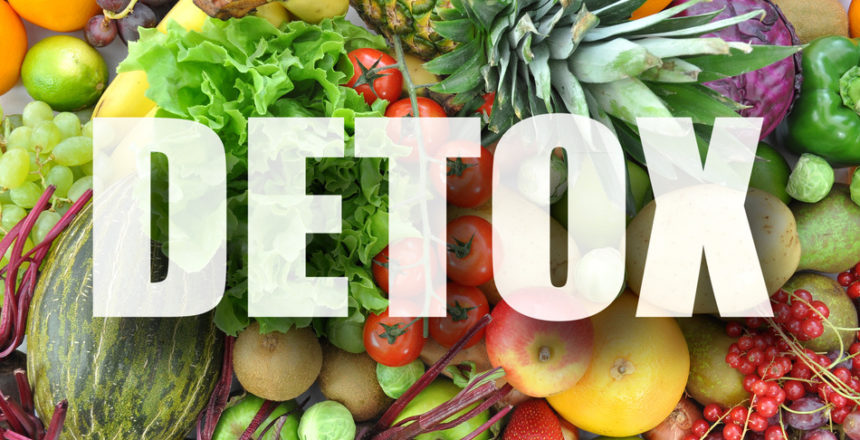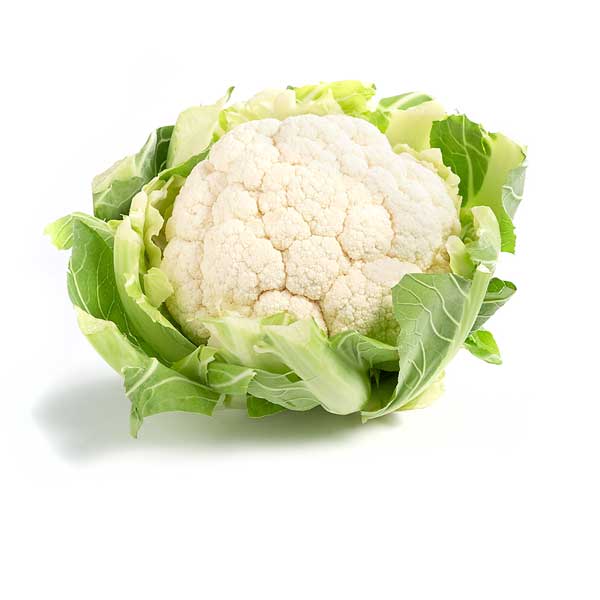Ketogenic diet; Everything you need to know about it
The Keto or Ketogenic Diet is a high-fat, low-carb, medium-protein diet that is very popular for rapid weight loss.
A ketogenic diet is one of the fat-burning diets that can lose weight and help improve diabetes and Parkinson’s disease. The Keto diet is a high-fat, low-carbohydrate, low-protein diet recommended for rapid weight loss. The sugars in food are usually converted to glucose in the human body and distributed throughout the body, especially the brain, to be burned as an energy source.
If the amount of sugar in the diet is low, the liver converts fat into fatty acids and the body into ketones. These ketone bodies go to the brain and replace glucose. This is the whole cycle of the ketogenic diet. In the keto diet, burning excess and accumulated fat is done without feeling hungry.
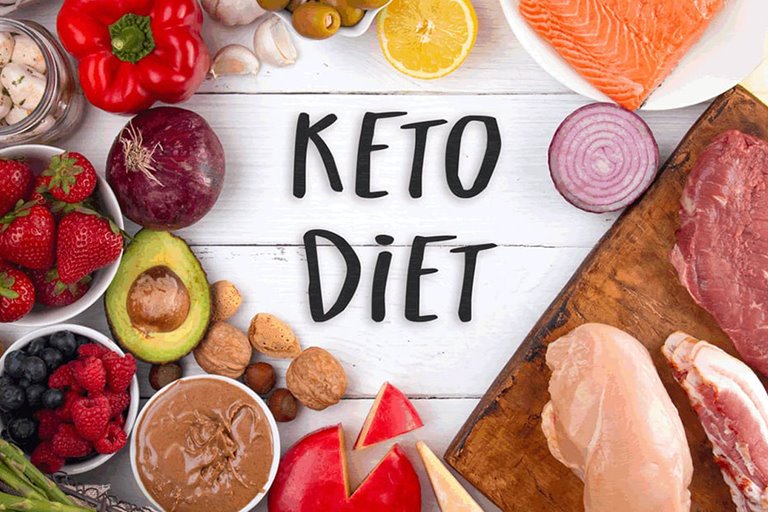
What is a ketogenic diet?
The ketogenic diet (abbreviated as the keto diet) is a high-fat, low-carbohydrate diet with many health benefits. A ketogenic diet, also called a ketone diet or a high-fat diet, with a high percentage of fat, enough protein, and low sugar forces the body to use fat instead of sugar for energy. Many studies show that this type of diet can help you lose weight and improve your health. Ketogenic diets may even have benefits against diabetes, cancer, epilepsy, and Alzheimer’s disease.
The ketogenic diet tries to reduce the number of carbohydrates and replace fats significantly. Reducing carbohydrates puts the body under a keto diet in a state of metabolism called ketosis. Under these conditions, the body burns fat, and the energy in it increases dramatically. Under these conditions, the body converts liver fat into ketones (an organic compound with a divalent carbonyl group and two hydrocarbon roots), delivering energy to the brain. A ketogenic diet can raise blood sugar and insulin levels. This action has numerous benefits, along with increasing ketones. In general, a ketogenic diet can be considered a low-carbohydrate, high-fat diet that lowers blood sugar and insulin and shifts the body’s metabolism from carbohydrates to fats and ketones.
Low-fat, high-carbohydrate ketogenic diets are very similar to Atkins and low-carb diets. The Atkins diet is a low-carb diet that is usually recommended for weight loss. Proponents of this diet believe that you can lose weight by eating complete protein and fat and only avoiding carbohydrate-rich foods. In the last 12 years, more than 20 studies have shown that low-carb diets are effective in weight loss and have many health benefits. The Atkins diet was invented by a physician named Dr. Robert Atkins. Dr. Atkins was recognized in 1972 as the best-selling book on nutrition.
Due to the severe reduction of carbohydrates and their replacement with fats, the ketogenic diet leads the body to a metabolic state. When this happens, your body becomes more efficient at burning fat for energy. It also converts fat into liver ketones, which can supply power to the brain. The human body works primarily with glucose. When your body is low in glucose or if you have diabetes and do not have enough insulin to absorb glucose into your cells, your body begins to break down fats for energy. Ketones (chemically known as ketone bodies) are by-products of the breakdown of fatty acids.
The decomposition of fats to produce fuel and ketones is a natural process for everyone. In a person without diabetes, insulin, glucagon, and other hormones prevent excessive blood ketones. However, people with diabetes are prone to accumulating ketones in their blood. If left untreated, people with type 1 diabetes are at risk for a condition called diabetic ketoacidosis (DKA). People with type 2 diabetes may also experience DKA in some cases. However, ketogenic diets can significantly lower blood sugar and insulin levels, and this type of diet, along with increasing ketones, has health benefits.

Different types of ketogenic diets:
There are several versions of the ketogenic diet, including:
Standard Ketogenic Diet (SKD): This type of ketogenic diet is shallow in carbohydrates, moderate in protein, and high in fat. This diet usually contains 70% fat, 20% protein, and only 10% carbohydrates.
Periodic Ketogenic Diet (CKD): This type of ketogenic diet includes periods with higher carbohydrate intake. For example, five days of ketogenic diet followed by two days of high carbohydrate.
Targeted Ketogenic Diet (TKD): This type of ketogenic diet allows you to add carbohydrates during exercise.
High protein ketogenic diet: This type of ketogenic diet is similar to the standard ketogenic diet. The difference is that it contains more protein, and this ratio often includes 60% fat, 35% protein, and 5% carbohydrates.
However, only standard and high protein ketogenic diets have been extensively studied. Periodic or targeted periodic ketogenic diets are more advanced methods and are used primarily by bodybuilders or athletes. This article is more about the standard ketogenic diet (SKD). However, there are many similar principles in other versions.
What is ketosis?
Ketosis is a metabolic disease in which your body uses fat instead of carbohydrates for fuel. This happens when you significantly reduce your carbohydrates, and glucose (sugar) is the body’s primary source of energy for cells. Following a ketogenic diet is the most effective way to get into ketosis. In general, this diet includes limiting carbohydrate intake to about 20 to 50 grams per day and consuming fats such as meat, fish, eggs, nuts, and healthy oils.
It is also necessary to regulate the amount of protein consumed. This is because protein can be converted to glucose if consumed in large quantities. Intermittent fasting can also help you get ketosis faster. The most common methods include limiting food intake to about 8 hours a day and fasting for 16 hours.
During ketosis, many parts of the body begin to burn ketones instead of carbohydrates, containing significant brain parts. However, this does not happen immediately, and it takes some time for the body to adapt to burning fat and ketones instead of carbohydrates. You may experience several temporary side effects at this stage of adjustment, commonly known as low-carb flu or keto flu.
At the beginning of ketosis, you may experience a series of negative symptoms, commonly referred to as “low-carb flu” or “keto flu” because the symptoms are the same as the flu. Symptoms include headache, fatigue, thirst, increased hunger, insomnia, nausea, frequent urination, and decreased physical function. These problems may prevent the ketogenic diet from continuing before use. However, low-carb flu goes away in a few days. Under these conditions, tests such as blood, urine, and breath tests can help determine ketosis by measuring the number of ketones produced in the body.
How does a ketogenic diet cause weight loss?
The ketogenic diet is an effective way to lose weight and reduce the risk factors for this disease. Research shows that a ketogenic diet may be just as effective as a low-fat diet. The ketogenic diet is so complete that you can lose weight without counting calories or tracking food intake.
A review of 13 studies has shown that following very low carbohydrates in a ketogenic diet is slightly more effective for long-term weight loss than a low-fat diet. People who followed the keto diet lost an average of 2 pounds (0.9 kg) more weight than those who followed the low-fat diet. Also, it lowers diastolic blood pressure and triglyceride levels.
Another study of 34 older adults found that those who followed a ketogenic diet for eight weeks lost about five times more body fat than those on a low-fat diet. Increasing ketones, lowering blood sugar levels, and improving insulin sensitivity may also play a key role in weight loss.
One of the benefits of a ketogenic diet is that you can lose weight with a ketogenic diet without feeling hungry and without the hassle of counting calories. Many studies have shown that the ketogenic diet is the most effective diet for weight loss, which has the lowest risk for diet-related diseases. With a ketogenic and satiety diet, you can lose weight without counting calories and absorbing nutrients. According to research, people on a ketogenic diet lost 2.2 times more weight than people on a low-calorie, low-fat diet.
Triglycerides and HDL cholesterol levels also improve during the ketogenic diet. There are many reasons why a ketogenic diet is better than a low-fat diet, including increasing protein absorption, which has many benefits.
In many diets, reducing calories means losing weight. But the problem is that you will feel fewer calories, which means you will receive more calories than before. One of the benefits of ketogenic diets is that you will not feel this problem, as most of your calories are from fat, so a high-fat diet will help you stay full for a long time.
Ketogenic diet enthusiasts believe that consuming fat makes them have better energy, alertness, and even brain function. In general, the human body system is such that if the diet is primarily composed of carbohydrates, it is the primary fuel source. But when you have a ketogenic diet, the body experiences a sharp reduction in carbohydrates and ketosis induction and is forced to use fat instead of carbohydrates.
The glycemic index consists of a scoring system from 1 to 100 that shows the ratio of each carbohydrate’s uptake into the bloodstream. The fastest absorbed glucose has a score of 100. This index has been used by nutritionists in recent years but still needs more research. It gives you an idea of how fast food carbohydrates are converted to glucose, and two foods with the same amount of carbohydrates can have different glycemic indexes.
Carbohydrates are not good or bad, but if you eat many sugary foods, you may increase your insulin production, leading to weight gain and, at worst, type 2 diabetes and heart disease. A lean person can also have about 50,000 calories in the form of fat. However, in a ketogenic diet, the body gets closer to its energy stores by eating less and inducing ketosis and still having an energy between meals.
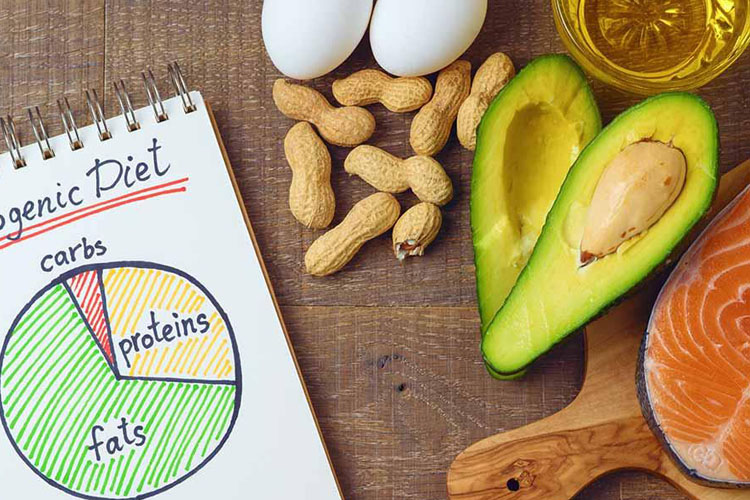
Ketogenic diets for diabetes and pre-diabetes:
Diabetes is characterized by changes in metabolism, high blood sugar, and impaired insulin function. A ketogenic diet can help you lose excess fat, closely linked to type 2 diabetes, pre-diabetes, and metabolic syndrome. An old study showed that a ketogenic diet improves insulin sensitivity by up to 75%. A small study of women with type 2 diabetes also found that following a ketogenic diet for 90 days significantly reduced hemoglobin A1C levels, which measure long-term blood sugar management.
Another study of 349 people with type 2 diabetes found that those who followed a ketogenic diet lost an average of 12 kilograms over two years. This is an essential advantage of this regime. Also, they examined the relationship between weight and type 2 diabetes, improved blood sugar management, and reduced the use of specific blood sugar medications among participants.
The critical role of keto diet in the treatment of epilepsy:
Research has shown that a ketogenic diet can significantly reduce seizures in children with epilepsy. The primary treatment regimen used in pediatric epilepsy has only enough protein to grow and repair the body and provide the calories needed to maintain height and weight at that age. The classical ketogenic regime was established in the 1920s and remained popular a decade later. However, with the production of antiepileptic drugs, it was gradually forgotten. In this classic diet, the weight ratio of fat to protein and carbohydrates is 4: 1, which requires high-carbohydrate foods (e.g., starchy fruits and vegetables, bread, pasta, cereals, and sugar). Instead, it increased the consumption of fatty foods such as nuts, cream, and butter.
Most dietary fats are made up of molecules called “long-chain triglycerides.” However, medium-chain triglycerides made from fatty acids with shorter carbon chains are more ketogenic. One example of a classic ketogenic diet called the “vomiting ketogenic diet” uses coconut oil rich in medium-chain triglycerides and provides half the calories needed. Because this type of diet uses less fat, more protein and carbohydrates can be added, and as a result, the patient has more variety and food choices.
In the mid-1990s, Jim Abrahams, whose son had severe epilepsy and was receiving good treatment, re-established it with the Charlie Foundation, which also funded research at several centers, the results of which were published in 1996.
Other health benefits of keto:
Apart from epilepsy, there are several other treatments for this diet, including Alzheimer’s disease, amyotrophic lateral sclerosis, autism, brain tumors, headaches, brain damage, pain, and Parkinson’s disease. Studies now show that diet can have benefits for a variety of health conditions. In this section, we look at some of these.
Heart disease: A ketogenic diet for heart disease can help improve risk factors such as body fat, HDL (good) cholesterol levels, blood pressure, and blood sugar.
Cancer: Diet is now considered an additional treatment for cancer because it may help slow tumor growth.
Alzheimer’s disease: The keto diet may help reduce the symptoms of Alzheimer’s disease and slow its progression.
Parkinson’s disease: Although more research is needed, one study found that this diet helps improve the symptoms of Parkinson’s disease.
Polycystic Ovary Syndrome: A ketogenic diet can help lower insulin levels, an issue that may play a significant role in polycystic ovary syndrome.
Brain Injuries: Some research shows that this diet can improve the consequences of brain injuries.
Foods to avoid on a ketogenic diet:
During periods of the ketogenic diet, any high carbohydrates food should be avoided, and its consumption should be minimized. Here is a list of foods that should be reduced or eliminated in the ketogenic diet:
Sweet foods: soft drinks, juices, smoothies, cakes, ice cream, candies and, etc
Cereals or starches: Basic products of wheat, rice, pasta, cereals, and so on
Fruit: All fruits except small portions of berries such as strawberries
Beans: peas, kidney beans, lentils, peas and, etc
Root vegetables: potatoes, sweet potatoes, carrots, parsley and, etc
Low-fat or diet products: low-fat mayonnaise, salad dressings, and condiments
Some condiments or sauces: barbecue sauce, honey mustard, opium sauce, tomato sauce and, etc
Unhealthy fats: processed vegetable oils, mayonnaise, etc
Alcohol: Beer, wine, alcoholic beverages, mixed drinks
Sugar-free diet foods: sugar-free candies, syrups, puddings, sweeteners, desserts, etc.

Foods to eat on a ketogenic diet:
During periods of the ketogenic diet, it is essential to prepare most of your meals based on what you eat in this diet. It is best to adjust your diet based on whole foods made up of one substance in a ketogenic diet. Here is a list of 44 healthy low carb foods:
Meat: red meat, steak, ham, sausage, bacon, chicken, and turkey
Fatty fish: salmon, salmon, tuna, and mackerel
Eggs: White eggs
Butter and cream: Vegetable butter and heavy cream
Cheese: Unprocessed cheeses such as cheddar, goat, cream, blue, or mozzarella
Nuts and nuts: Almonds, walnuts, flax seeds, pumpkin seeds, chia seeds and, etc
Healthy oils: Extra virgin olive oil, coconut oil, and avocado oil
Avocado: Whole avocado or freshly made guacamole
Low carb vegetables: green vegetables, tomatoes, onions, peppers, etc.
Spices: salt, pepper, herbs, and spices
For example, here is an example of a ketogenic diet plan for a week to help you start. In these types of diets, always try to chop vegetables and meat for a long time because it provides you with various nutrients and various health benefits.
Saturday
Breakfast: vegetable and egg cookies with tomatoes
Lunch: Chicken salad with olive oil, feta cheese, olives, and a side salad
Dinner: Salmon with asparagus cooked in butter
Sunday
Breakfast: egg omelet, tomatoes, basil, and spinach
Lunch: Almond milk, peanut butter, spinach, cocoa powder, and chopped stevia milkshake with strawberries
Dinner: Meat and cheese tacos with salsa
Taco is a traditional Mexican dish. This dish includes tortilla bread baked from corn or wheat flour, filled with various ingredients, from meat to chicken and seafood and vegetables and even cheese. Salsa is a combination of sauces used to garnish tacos and other Mexican-Mexican-American dishes and flavor tortilla chips.
Monday
Breakfast: Chia pudding with coconut and blackberries
Lunch: Avocado Shrimp Salad
Dinner: minced meat with Parmesan cheese, broccoli, and salad
Tuesday
Breakfast: omelet with avocado, salsa sauce, pepper, onion, and spices
Lunch: a handful of nuts and celery stalks with guacamole and salsa
Dinner: Chicken full of pesto and cream cheese with grilled zucchini
Guacamole is a sauce made from avocado and originally from Mexico. It can be said that the only thing you need to prepare this sauce is avocado and a little salt. Of course, you can add a little lemon juice to it. The trick to making great guacamole is to use good, ripe avocados. Unripe avocados will not taste good.
Wednesday
Breakfast: Greek sugar-free yogurt, whole milk yogurt with peanut butter, cocoa powder, and berries
Lunch: Lettuce, minced beef, chopped bell peppers
Dinner: cauliflower, sour cream, cheddar cheese, tomato sauce mixture, onion powder, garlic powder, and frying mixed with butter and vegetables
Thursday
Breakfast: cream cheese pancakes with blueberries and grilled mushrooms
Lunch: Zucchini and beet noodle salad
Dinner: white fish cooked in coconut oil with kale and nuts
Friday
Breakfast: fried eggs with mushrooms
Lunch: low carb sesame chicken and broccoli
Dinner: Spaghetti Bologna
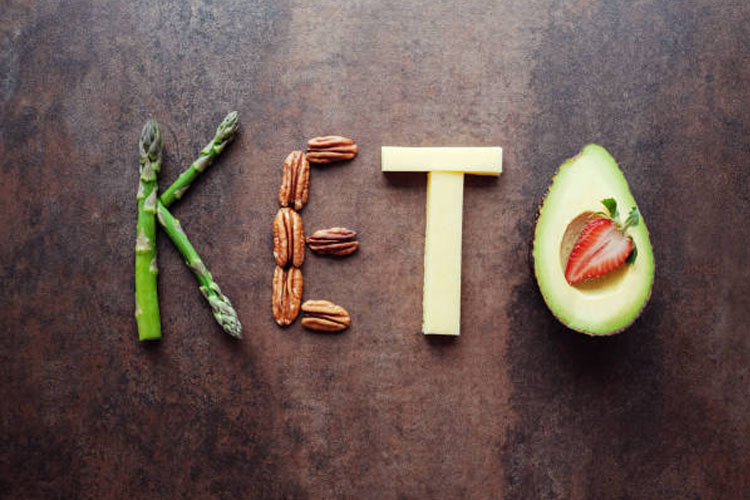
Healthy snacks in courses of the ketogenic diet:
If you are hungry during ketogenic diets between meals, you can eat healthily and approved keto meals. These snacks include lean meat or fish, cheese, a handful of nuts, a bite of Soto keto, olives, one or two fried or steamed eggs, 90% dark chocolate, high-fat Greek yogurt mixed with butter and cocoa powder. And The peppers used to jam and guacamole, strawberries and plain cheese, celery with salsa and guacamole, spicy beef, and so on. In general, great snacks for the keto diet include meat, cheese, olives, boiled eggs, nuts, raw vegetables, and dark chocolate.
Keto Tips and Tricks:
Although starting a ketogenic diet can be challenging, you can use a few tips and tricks to make it easier. Start by looking at food labels and examining hot fats, carbohydrates, and fiber to determine which foods are in your diet. Pre-planned meals can help save extra time during the week. Many websites, food blogs, programs, and cookbooks also offer Keto-friendly recipes and food ideas that you can use to build your custom menu.
Alternatively, some food delivery services offer convenient keto options for an easy and quick way to enjoy keto meals at home. When you do not have enough time to look for frozen keto meals, you may want to bring your food when you go to social gatherings or with family and friends, and this can make it very easy to curb cravings and stick to a diet. Slowly
Also, do not worry about the keto diet, what food to order in restaurants because most restaurants serve meat or fish meal, and you can order this type of food and replace any high carb diet with extra vegetables. do. Egg-based meals, such as omelets or eggs and bacon, are also good choices during keto diets.
Another exciting thing about this type of diet is the freedom to use delicious foods such as hamburgers, which of course you should eat without bread. You can also replace fried potatoes with vegetables and add avocado, cheese, bacon, or eggs instead. You can enjoy any kind of meat with extra cheese, guacamole, salsa, and sour cream in Mexican restaurants, and you can even order cheesecake or berries mixed with cream for dessert. In short, you can choose a meat, fish, or egg-based meal during the keto diet, even if you are in a restaurant. Instead of carbs or starch, order extra vegetables and eat cheese for dessert.
Side effects and how to minimize them:
A ketogenic diet is usually safe for most healthy people. But while your body is fully compliant with this diet, there may be some early side effects. There is evidence of these effects, often referred to as “keto influenza.” According to some people’s diet plans, this flu-type usually goes away in a few days.
Symptoms of keto flu include diarrhea, constipation, and vomiting. Other common symptoms include insufficient energy and mental function, increased hunger, sleep problems, nausea, indigestion, and decreased athletic performance. To minimize this, you can have a low-carb diet for the first few weeks. This trick may teach your body to burn more fat before eating all the carbs.
A ketogenic diet can also alter the body’s water and mineral balance, so adding extra salt to meals or taking mineral supplements can help. Talk to your doctor about your nutritional needs. In a ketogenic diet, you should at least eat first and avoid high-calorie restriction. Finally, a ketogenic diet usually results in weight loss without intentional calorie restriction.
Dangers of the Keto regime; Which should not try the Keto diet:
The Keto diet can be used by almost everyone and is safe. But there are different groups of people who may experience rapid weight loss and sudden blood sugar changes. Staying on a keto diet for a long time may have adverse effects such as a lack of protein in the blood, excess fat in the liver, kidney stones, and a lack of micronutrients. A drug called sodium-glucose inhibitors (SGLT2) for type 2 diabetes can increase the risk of diabetic ketoacidosis.
It is a dangerous disease that increases the acidity of the blood. Therefore, anyone taking this drug should avoid the keto diet. Further research is underway to determine the long-term safety of the keto diet. Tell your doctor about your diet plan to guide your choices. Therefore, diet is not recommended for people taking insulin or any diabetes or blood pressure medication. Breastfeeding mothers and pregnant women are strongly advised to consult their physician before taking a ketogenic diet sample.
Also Read:
How to diagnose coronary heart disease?
Causes of heart palpitations in pregnancy

